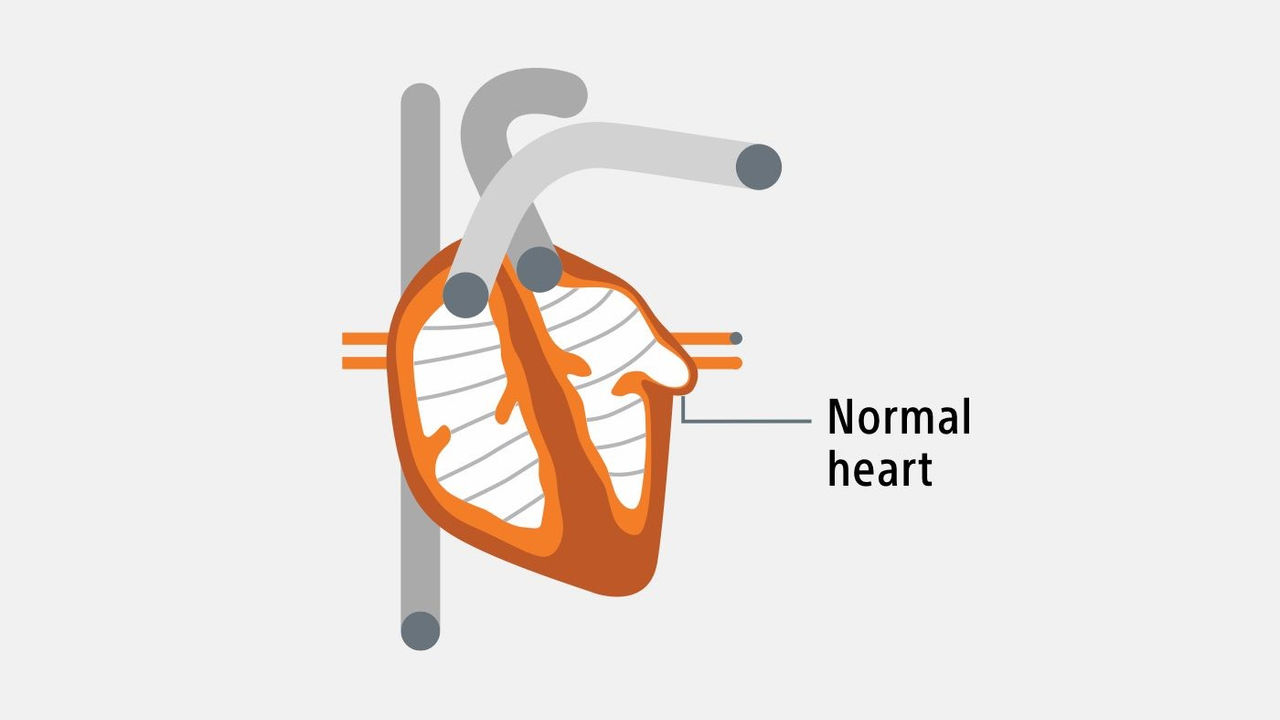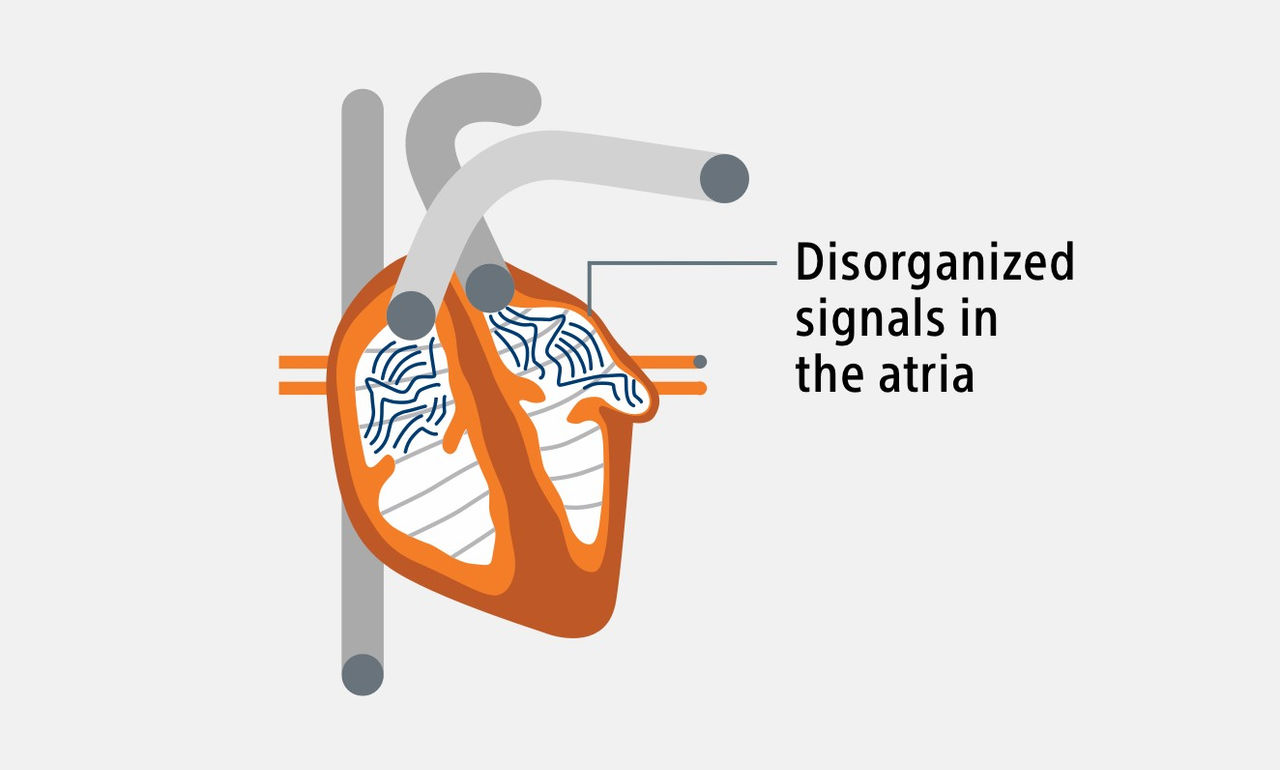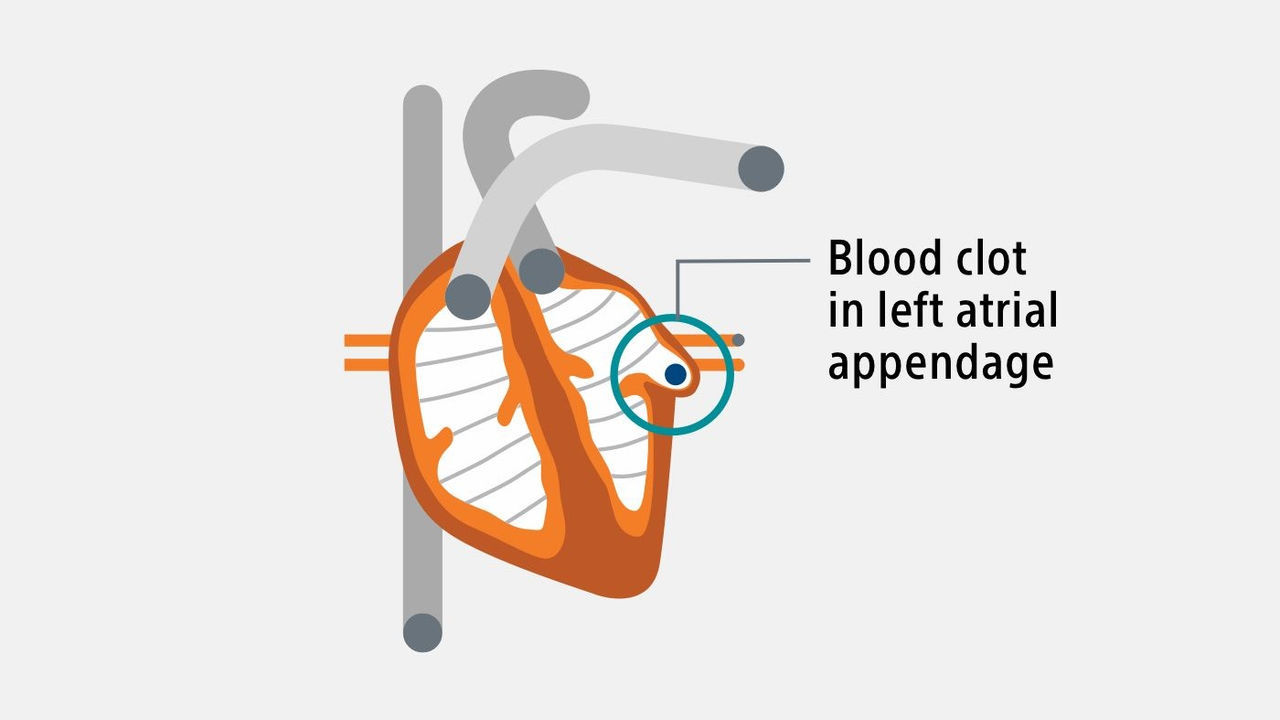The link between AFib and stroke
If blood is not pumped efficiently from the top to the bottom chambers of the heart, it may collect in the left atrial appendage (LAA), where it stagnates, creating a dangerous environment for thrombus (blood clot) formation. If a blood clot dislodges from the LAA and travels to the brain, it may block the blood flow and cause a stroke.
1 out of 3 people
with AFib will have a stroke in their lifetime1
5x higher chance of having a stroke
in people with AFib vs. people with a regular heartbeat2
How does Atrial Fibrillation (AFib) cause stroke?

Your heart has an electrical system that controls the rate and rhythm of your heartbeat. In a healthy heart, the electrical signals produce a steady heartbeat and blood pumps normally.4

In Atrial Fibrillation (AFib), the electrical signals are disorganised and the top two chambers of the heart, the atria, beat rapidly and irregularly (fibrillate).4

Because blood isn’t pumped out of the heart normally, it’s easier for blood cells to stick together and form clots in an area of the heart called the left atrial appendage (LAA).5 If a blood clot escapes, it can travel through the bloodstream to the brain and may cause a stroke.4
Reducing the risk of stroke
Blood thinner medications, also called anticoagulant drugs, are an effective way to lower the risk of stroke in people with AFib not caused by a heart valve problem. Other ways to reduce your stroke risk include an active lifestyle, not drinking or smoking.5
The blood thinner warfarin has been around for more than 60 years.
For people who need an alternative, there are heart procedures such as Left Atrial Appendage Closure that is a permanent implant intended to reduce blood clots from escpacing which could cause a stroke.1
